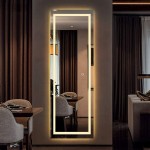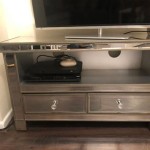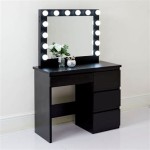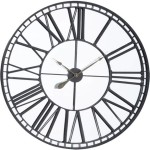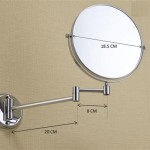Large Antique Wall Mirrors: A Timeless Reflection of Style and History
Large antique wall mirrors represent more than just reflective surfaces; they are significant pieces of decorative art, imbued with historical context and craftsmanship that transcends contemporary design. These mirrors, often spanning several feet in height and width, serve as focal points within a space, adding depth, light, and a sense of bygone elegance. Their value lies not only in their aesthetic appeal but also in their provenance, materials, and the artistry involved in their creation.
The allure of antique mirrors lies in their uniqueness. Unlike mass-produced items, each antique mirror bears the marks of its age and origin, telling a silent story of the eras it has witnessed. From the subtle imperfections in the glass to the intricate detailing of the frame, every element contributes to its individual character. Investing in a large antique wall mirror is essentially acquiring a tangible piece of history, a fragment of a past era that can enrich a modern living space.
The production of antique mirrors relied on techniques and materials that are rarely replicated today. The glass-making process itself differed considerably from modern methods, often resulting in a softer, warmer reflection and subtle imperfections that add to the mirror's charm. The frames were typically crafted from hardwood, often adorned with elaborate carvings, gilding, or other decorative elements. These details provide insight into the prevailing artistic styles and craftsmanship of the period in which the mirror was created.
Identifying Key Characteristics of Large Antique Wall Mirrors
Distinguishing a genuine antique mirror from a reproduction requires a keen eye and an understanding of historical styles and manufacturing techniques. Several key characteristics can help in the identification process. These include the type of glass used, the construction of the frame, the presence of specific decorative motifs, and the overall condition of the piece.
The glass in antique mirrors often exhibits subtle variations in color and clarity due to the manufacturing processes of the time. Prior to the development of modern float glass, mirror glass was typically produced by hand-blowing techniques. This resulted in slight imperfections, such as striations, bubbles, or a subtle waviness, that are not typically found in modern mirrors. These imperfections, far from being flaws, are considered hallmarks of authenticity and contribute to the mirror's unique character. Furthermore, the silvering process used to create the reflective surface was different in the past, often resulting in a warmer tone and a distinctive oxidation pattern known as "foxing". This foxing, appearing as dark spots or areas of discoloration, is a natural consequence of aging and is often seen as a desirable characteristic in antique mirrors.
The frame of an antique mirror offers further clues to its origin and authenticity. The type of wood used, the style of carving, and the presence of any embellishments can provide valuable information. Frames were typically crafted from hardwoods such as mahogany, walnut, or oak, chosen for their durability and aesthetic appeal. The carvings often reflect the prevailing artistic styles of the period, such as the ornate Rococo style of the 18th century or the neoclassical designs of the late 18th and early 19th centuries. The presence of original gilding, often applied using gold leaf, is another indicator of age and quality. The construction techniques used to assemble the frame can also provide insights, with traditional joinery methods such as dovetail joints or mortise-and-tenon joints being more common in antique pieces.
Decorative motifs incorporated into the frame design can further aid in identification. These motifs often reflect the symbolism and aesthetic preferences of the period in which the mirror was created. For example, mirrors from the Victorian era might feature floral motifs, scrolls, or other ornate embellishments, while those from the Art Deco period might incorporate geometric patterns and streamlined designs. Researching the historical context of these motifs can help to narrow down the age and origin of the mirror. Examining the back of the mirror and the way it is assembled can also provide clues, as older mirrors often have different fastening methods and materials compared to modern reproductions.
Factors Influencing the Value of Large Antique Wall Mirrors
The value of a large antique wall mirror is determined by a complex interplay of factors, including its age, condition, rarity, provenance, and aesthetic appeal. Understanding these factors is crucial for both collectors and those seeking to invest in these historical artifacts.
Age is a significant determinant of value, with older mirrors generally commanding higher prices. Mirrors from the 18th century or earlier are particularly prized due to their scarcity and historical significance. However, age alone is not sufficient to guarantee high value. The condition of the mirror also plays a crucial role. Mirrors in excellent condition, with minimal damage to the glass and frame, are typically worth more than those in poor condition. However, some degree of wear and tear is to be expected in antique pieces, and excessive restoration can sometimes detract from their value. The rarity of the mirror is another important factor. Mirrors with unique designs, unusual features, or those produced by renowned makers are often more valuable due to their limited availability. Pieces with documented provenance, meaning a clear history of ownership, are also highly sought after, as this adds to their historical significance and authenticity.
The aesthetic appeal of the mirror is a subjective but nonetheless important factor. Mirrors with particularly attractive designs, high-quality craftsmanship, and a pleasing overall appearance tend to be more desirable to collectors and buyers. Factors such as the size of the mirror, the style of the frame, and the quality of the glass all contribute to its aesthetic appeal. Mirrors that are well-proportioned and visually striking are more likely to command higher prices. The materials used in the construction of the mirror also influence its value. Mirrors with frames made from expensive materials such as exotic hardwoods or those adorned with precious metals are typically more valuable than those made from less expensive materials.
Market trends and collector preferences also play a role in determining the value of antique mirrors. The demand for specific styles or periods can fluctuate over time, influencing prices accordingly. Researching current market trends and consulting with experts can provide valuable insights into the potential value of a particular mirror.
Caring for and Displaying Large Antique Wall Mirrors
Preserving the integrity and beauty of a large antique wall mirror requires careful handling and appropriate care. Proper cleaning, storage, and display techniques are essential to prevent damage and ensure that the mirror retains its value and appeal for generations to come.
Cleaning antique mirrors requires a gentle approach. Harsh chemicals and abrasive cleaners should be avoided, as they can damage the delicate glass and frame. A soft, lint-free cloth dampened with distilled water is typically sufficient for cleaning the glass surface. For stubborn stains, a mild solution of water and vinegar can be used, but it is important to test the solution on an inconspicuous area first. The frame should be cleaned with a soft brush or cloth to remove dust and dirt. Avoid using polishes or waxes on gilded frames, as these can damage the gold leaf. For more extensive cleaning or restoration, it is best to consult with a professional conservator.
Proper storage is crucial for preventing damage to antique mirrors. Mirrors should be stored in a dry, stable environment away from direct sunlight and extreme temperatures. Humidity can cause damage to the frame and silvering, while sunlight can fade colors and weaken materials. If the mirror is not being displayed, it should be wrapped in acid-free paper or cloth and stored in a protective container. Avoid storing mirrors in damp basements or hot attics, as these environments can accelerate deterioration.
When displaying a large antique wall mirror, consider its weight and size to ensure that it is securely mounted. Use appropriate hardware and mounting techniques to prevent the mirror from falling. Avoid placing the mirror in areas where it is likely to be bumped or scratched. The placement of the mirror can also affect its aesthetic impact. Consider the lighting in the room and position the mirror to maximize its reflective properties. Placing the mirror opposite a window or light source can help to brighten the space and create a sense of depth. Experiment with different placements to find the most visually appealing arrangement.

Large Antique Wall Mirror 1860s For At Pamono

Large Antique Gold French Framed Decorative Rococo Ornate Opera Wall Mirror Choice Of Size Premium Quality Free P

Large Antique Gold Shabby Chic Ornate Decorative Wall Mirror

Large Antique French Gilt Frame Wall Mirror The Design Ark

Antiques Atlas Large 19th Century Gilt Wall Mirror

Large Antique Gold Statement Ornate Period French Over Mantle Wall Mirror 5 Ft

Large Antique Gilt Overmantle Floor Wall Mirror For At Pamono

Large Silver Gilt Antique Style Wall Mounted Mirror Arched 6ft4 X 4ft6 192x134cm

Large Antique Square Gilt Rococo Wall Mirror 1800 For At Pamono

Marley Forrest Large Rectangle Antique Aged Silver Leaf With Black Highlights Beveled Glass Classic Mirror 41 In H X 31 W 2113 The Home Depot

